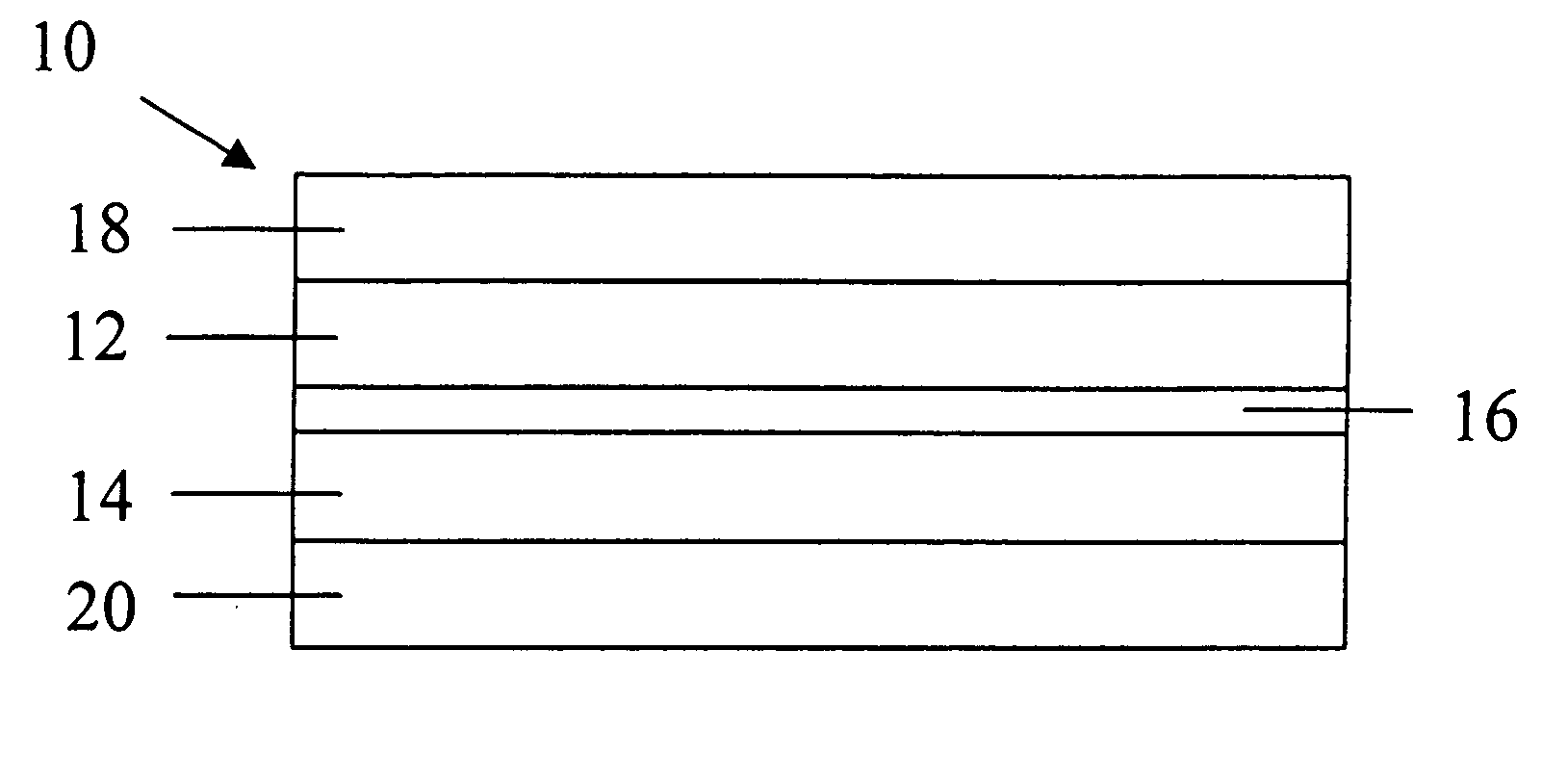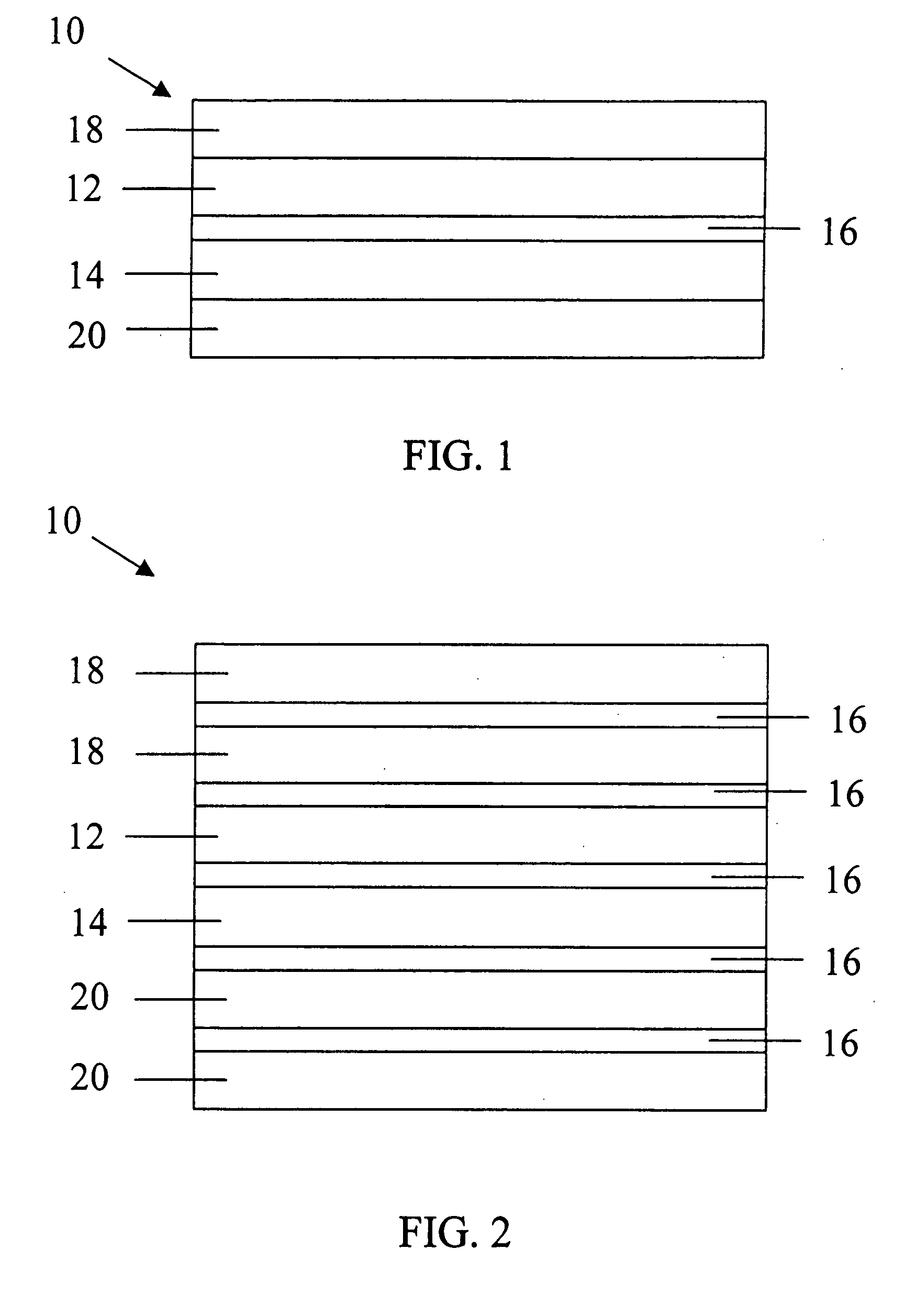Multilayer sheets and films composed of PCTFE and cyclic olefin copolymer
a polymer and polymer technology, applied in the field of multi-layer sheets and films, can solve the problems of low fluoropolymer adhesion, limited use of fluoropolymers in specialty packaging applications, and relatively high cos
- Summary
- Abstract
- Description
- Claims
- Application Information
AI Technical Summary
Problems solved by technology
Method used
Image
Examples
example 2
[0066] A three-layer PCTFE / tie / COC coextruded sheet was produced, using the same PCTFE and COC materials from Example 1. A Davis-Standard single screw extruder as described in Example 1 was used for COC as explained in Example 1. A Davis-Standard single screw extruder (diameter: 3.2 cm (1.25″); L / D=24 / 1) was used to blend the tie layer, which tie was a solid blend of 85% of an ethylene butene plastomer (Exacts® 4049 from ExxonMobil Chemical; density: 0.873 g / cm3; melting point: 55° C.; melt index (ASTM D1238): 4.5 g / 10 minutes at 190° C. and 2.16 kg load) and 15% of a styrene modified terpene resin (Sylvares® ZT105LT of 15% from Arizona Chemical; softening point: 105° C.). Four barrel temperatures (BZ1-4), gate temperature, two adapter temperatures (Adapter 1-2) of the tie layer extruder were set at 66° C., 216° C., 249° C., 271° C., 271° C., 271° C., 271° C. The melt temperature was 278° C. The screw speed was 30 rpm. Another Davis-Standard single screw extruder was used (diameter:...
example 3
[0068] A three-layer PCTFE / tie / COC coextruded sheet was produced similarly to Example 2. With the same structure, the composition of tie material was changed to a solid blend of 75% of the ethylene butene plastomer of Example 2 and 25% of the styrene modified terpene resin of Example 2.
[0069] The three-layer film was tested for 180° and 90° interlayer bond strength (ASTM F904). The 180° testing carried out as in Example 1 showed slip-stick behavior having an average interlayer bond strength of about 366 g / inch (2.54 cm). The 90° testing carried out as in Example 1 showed slip-stick behavior having an average interlayer bond strength of about 236 g / 2.54 cm.
PUM
| Property | Measurement | Unit |
|---|---|---|
| pressures | aaaaa | aaaaa |
| temperatures | aaaaa | aaaaa |
| temperatures | aaaaa | aaaaa |
Abstract
Description
Claims
Application Information
 Login to View More
Login to View More - R&D
- Intellectual Property
- Life Sciences
- Materials
- Tech Scout
- Unparalleled Data Quality
- Higher Quality Content
- 60% Fewer Hallucinations
Browse by: Latest US Patents, China's latest patents, Technical Efficacy Thesaurus, Application Domain, Technology Topic, Popular Technical Reports.
© 2025 PatSnap. All rights reserved.Legal|Privacy policy|Modern Slavery Act Transparency Statement|Sitemap|About US| Contact US: help@patsnap.com


